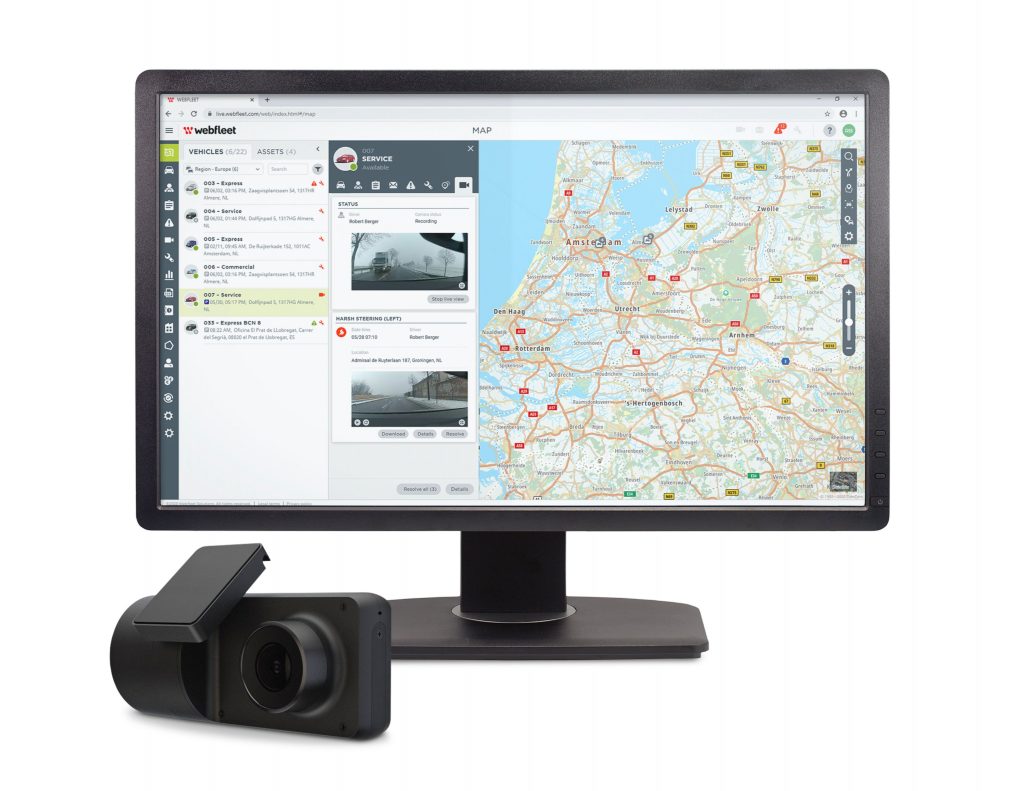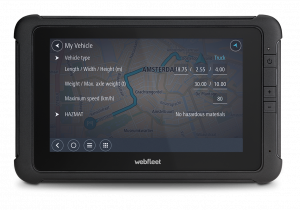Significant investment is being made into developing more powerful hardware and software to increase fleet safety. While, increasingly, many of these technologies are coming as standard features, other solutions – particularly those best suited to commercial driving – require further investment.
In the Webfleet European Road Safety Survey 2021, we gathered the opinions of 1050 fleet decision makers across the continent on all issues related to safety for their companies – the impact, the challenges, the cost and the technologies they use to improve.
In this short extract from the full report, we look at some of the technologies fleets use to run more safely, the barriers to adopting them and how to overcome these issues to get the full benefit.
IF YOU WANT TO GET THE FULL REPORT NOW, CLICK HERE.
The most popular technologies
During our survey, we asked the respondents about the current solutions they use to improve safety. These were among the most popular solutions:
- Reversing and side cameras – 47%
- Vehicle signage – 38%
- Front facing dash camera – 37%
- Additional vehicle mirrors – 36%
- Real-time tyre pressure monitoring system – 34%
- Lane departure warning system – 32%
- Driver facing dash camera – 31%
- Telematics data on driving behaviour – 30%
WANT TO GET ALL THE STATS? DOWNLOAD THE EUROPEAN ROAD SAFETY REPORT 2021.
Given all of these products can significantly contribute to a safer fleet, it’s worth considering why many commercial fleets are yet to utilise them. For those respondent who did not use one of the above-mentioned technologies, we asked what their main reason for not doing so was.
These were the most commonly cited reasons:
- Cost
- Inability to integrate with existing technology
- I don’t believe it will work well for my business
- I wasn’t previously aware of this technology
- My drivers won’t use it out of lack of interest
- My drivers won’t use it on privacy grounds
- I don’t have time or resources for training
Although these are legitimate concerns, in some cases they may not be as high a barrier as they first appear. For any technology you may wish to add to your fleet, a good technology provider should be able to help you overcome the barriers and reap the full benefits.


Solving the cost issue
These days, fleets of all sizes must be warier of their running costs than ever. The cost of adding any new solutions or hardware, then, must be carefully balanced against its benefits. It’s unsurprising to find many fleet managers hesitating before they commit to adopting.
However, many of the solutions mentioned above can offer return on investment (ROI) and not only in terms of cutting your repair costs and insurance fees. They can also help your drivers to drive more economically on the road, reducing fuel consumption.
A good technology provider should clearly outline how your solution is going to deliver return on investment and when. For example, Webfleet customers, on average, get a return on investment within 6 to 9 months of adopting our WEBFLEET solution.
Integrating with existing systems
Regardless of how powerful a new digital solution or piece of hardware might be, if it disrupts the functionality of the technology you already use then it might be more trouble than it’s worth.
A new solution will need to be adaptable enough to make the integration process as simple and undisruptive as possible. Webfleet comes with multiple APIs, so you can easily integrate it with your back-end systems, as well as hundreds of third-party solutions.
READY FOR THE FULL REPORT? DOWNLOAD HERE.
Respecting your drivers’ privacy
It is not unusual for fleet managers to receive pushback from drivers when introducing new technology to their vehicle, particularly when it makes the performance of the driver more visible. Drivers might feel that this is an invasion of their privacy or a sign they are not fully trusted by the company.
It is key that when any new solution is introduced, it is made clear how it will benefit the driver themselves, whether it be by keeping them safer, protecting them from fraudulent claims or making their time behind the wheel less stressful. However, the technology itself should also be designed with the driver’s privacy expectations in mind.
For example, Webfleet Video, Webfleet integrated video telematics service, is built with privacy by design. This means the customer has control over how and when both the driver facing and road facing cameras retrieve and store footage. This allows fleet managers to keep their drivers secure when they are working and respect their privacy when they are not. This kind of flexibility is key to ensuring all the stakeholders are comfortable utilising new safety solutions.
![]()
Road safety should be a priority in your operations regardless of the barriers you may encounter. A safety initiative supported with new safety technology, like telematics, will protect your financial assets, and most importantly your drivers.
READY FOR THE FULL REPORT? DOWNLOAD IT HERE








